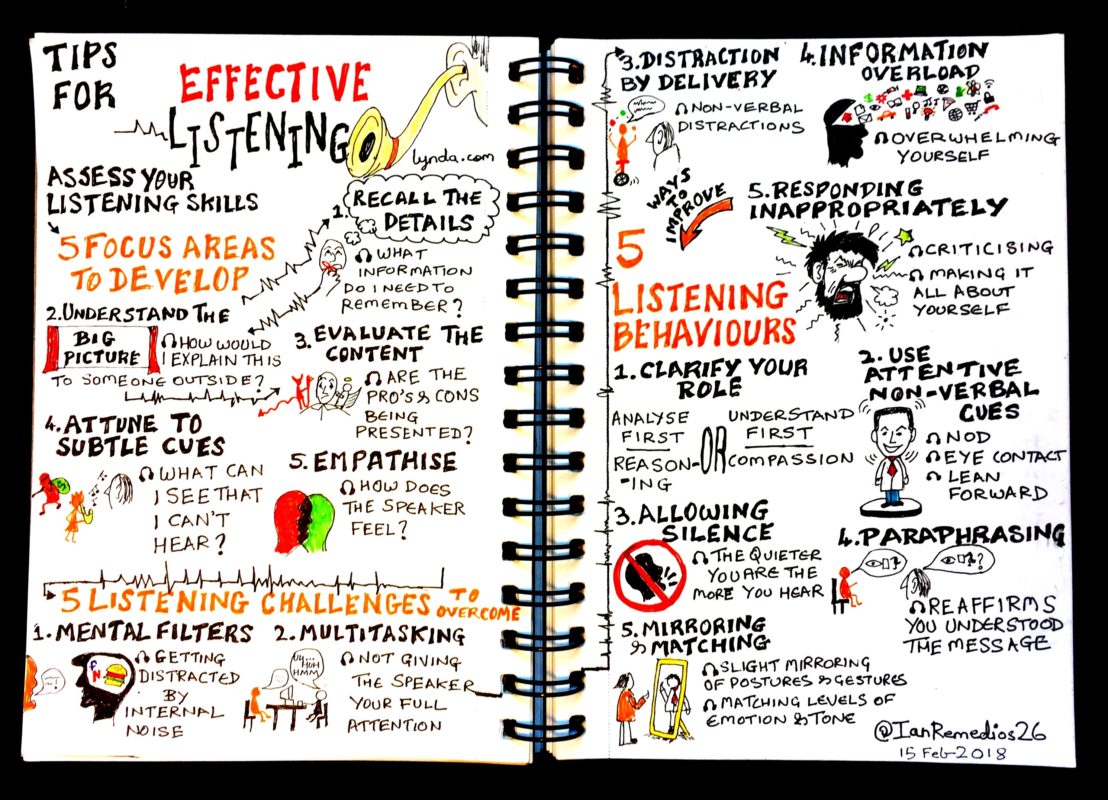

Listeners attempt to understand the content, comprehend in the way it is directed, and draw conclusions. Such listening involves engaging their intellect along with their emotions while listening to the message. It is a higher level of listening, as it helps in collecting reliable facts, but it does not pay much attention to the emotions, feelings, and situation of the other person. Asking questions lets the listener get the desired information relating to something which has value. The listener is wholly engrossed in the conversation and interprets the message at a deeper level. Such listening entails asking questions and drawing further information from the speaker. Such listening relies on the objective of the listener. It happens when the listener is not in the condition to concentrate. The listener here tunes himself in and out. This means that the listener concentrates only on that part of the message which interests him and not on the complete message. people listen to what they want to listen to. Selective ListeningĪs the name suggests, in selective listening the listener pays attention to a selective portion of information or words and phrases only. This results in a misunderstanding on the side of the speaker as the listener focuses more on the words spoken. However, the comprehension is low, because the listener cares more about the content and not the feelings of the speaker and does not take part in the conversation. Such a type of listening involves verbal or non-verbal signals from the listener that he is paying attention to the message like a head nod or ‘oh’. the person may be engrossed in his/her own thoughts. This is a situation of half listening and half thinking or sleeping, i.e. It also takes place when the speaker is unable to reach out to the wavelength of the speaker. The reason for passive listening may be fatigue, ill health, disregard of the speaker, or lack of interest in the matter.

So, the receiver of the message may be physically present but mentally absent. That is to say, the listener does not make any conscious effort to absorb the message. The different types of listening are explained hereunder: Passive ListeningĪt the lowest level, such a form of listening encompasses the little degree of engagement or intensity of listening, wherein the receiver of the message seems to be listening to the message but without any response. Further, to get the required information and also clarity about the picture, the listener may ask various questions.

The process of listening involves four stages: It takes place when the receiver of the message is willing as well as ready to learn or be influenced or changed by the message that the speaker conveys to him. Listening involves the act of carefully hearing the speaker.

Listening means paying thoughtful attention to the statement of the speaker. For the purpose of listening, we need to train our ears and question ourselves, as to why we want to listen to something or somebody. What is Effective Listening?Įffective listening is the one that needs openness of the mind, concentration, and a continuous mental classification and association of the message which is heard. On the receiver’s side: Decoding and responding with feedback.Īs per the researchers, a normal human being spends 45% of his communication time in listening, 30% on speaking, 16% on reading, and 9% on writing.On the speaker’s side: Encoding and transmission of the message.But in the case of listening, we use our brain, by paying attention to the subject matter and interpreting what is being said. Hearing is a physical activity that involves sound entering into a person’s ears. Listening is a deliberate effort that is not identical to hearing.


 0 kommentar(er)
0 kommentar(er)
